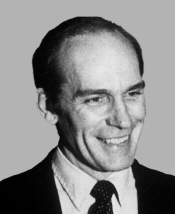Andrew Jacobs, Jr.
| Andrew Jacobs Jr. | |
|---|---|
 |
|
| Member of the U.S. House of Representatives from Indiana's 11th and 10th district |
|
|
In office January 3, 1965 – January 3, 1973 |
|
| Preceded by | Donald C. Bruce |
| Succeeded by | William H. Hudnut III |
|
In office January 3, 1975 – January 3, 1997 |
|
| Preceded by | William H. Hudnut III |
| Succeeded by | Julia Carson |
| Member of the Indiana House of Representatives | |
|
In office 1959–1960 |
|
| Personal details | |
| Born |
February 24, 1932 Indianapolis, Indiana, U.S. |
| Died |
December 28, 2013 (aged 81) Indianapolis, Indiana, U.S. |
| Political party | Democratic |
| Spouse(s) | 1. Kay Welsh 2. Martha Keys 3. Kimberly Hood Jacobs |
| Children | Andy and Steven |
| Religion | Roman Catholic |
| Military service | |
| Service/branch | United States Marine Corps |
| Years of service | 1950–1952 |
| Battles/wars | Korean War |
Andrew Jacobs Jr. (February 24, 1932 – December 28, 2013) was a lawyer and an Indiana state legislator and Congressman, who served in the United States House of Representatives for thirty years. His father, Andrew Jacobs, was also a congressman for one term. In 1988, Jacobs remarried, lastly, to Kimberly Hood Jacobs, an Emmy Award-winning television reporter and personality.
Jacobs was born in Indianapolis, and graduated from Shortridge High School in 1949. He served as an infantryman in the United States Marine Corps in the Korean War, and was a disabled combat veteran. He graduated with a bachelor's degree in Business from Indiana University in 1955, and a LL.B. from Indiana University in 1958. Upon graduation he began a law practice and served in the Indiana House of Representatives from 1959–1960.
Jacobs served as a member of the Indiana House of Representatives from 1959 to 1960. In 1964 he was elected to the United States House of Representatives as a Democrat in the overwhelming Democratic landslide of 1964. He was appointed to the House Judiciary Committee, on which he coauthored the Voting Rights Act of 1965. Jacobs was an active participant in the American Civil Rights Movement in the 1950s and 60s.
...
Wikipedia
